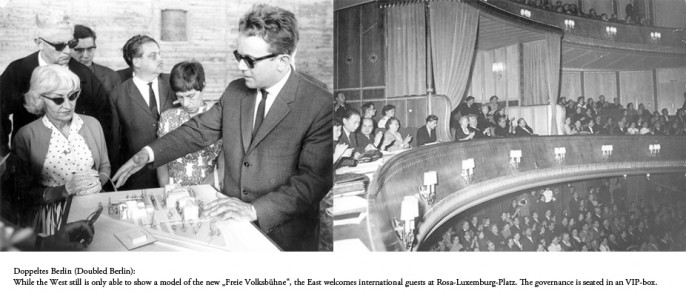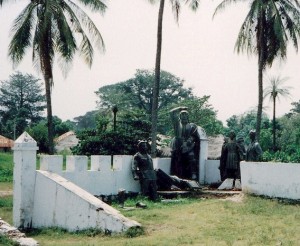Bosch Fellow James Der Derian was supposed to be working on a book version of his documentary film Human Terrain , about the deployment of academics in the Iraq war. Armed with graduate degrees in anthropology and other social sciences, academics went to battle as cultural advisers, aiding the US Army in winning “hearts and minds.” But instead of working on this book, and after he wrote an opinion piece in the Berliner Zeitung about Eisenhower’s 1961 “Farewell Speech,” Der Derian become embroiled in a debate about a proposed Ronald Reagan Platz.
Through a series of events — a television interview, a newspaper opinion piece, a panel discussion — he found that his involvement in Berlin’s “local” debate was creating a kind of strange US-German diplomacy that defied the traditional notion of state-actor official negotiation. It was a “diplomacy” that, like it does increasingly all over the globe, engages smaller nodes of interaction: cities, towns, NGOs, media representatives, and other “byways of representation”: the internet, public and private — discussion across multiple platforms. Once upon a time, the secretary of state under Ronald Reagan, George P. Shultz, along with his colleague Sidney Drell, called this kind of multifaceted, hard-to-pin-down diplomatic entanglement, “quantum diplomacy.” Diplomacy now, Der Derian says, is increasingly like this: “phase-shifting,” “level-jumping,” “distance-traversing,” rising, falling, dividing. It is, he says, a bit like Schrödinger’s Cat: how should one determine where and in what state it was at any one point?
Quantum diplomacy soon entered Der Derian’s life even more deeply. In February, as he was mulling his opinion piece for the Berliner Zeitung, he wandered through the streets of Berlin taking photographs of American street names: Harry S. Truman Street, Clay Allee, John F. Kennedy Platz, John Foster Dulles Street. Yet he could not find any Dwight D. Eisenhower, the US President who actually liberated Berlin at the end of the Second World War. Was this an oversight? You could find streets named for communist Rosa Luxemburg, war theorist Carl von Clausewitz, and philosopher Walter Benjamin. Der Derian proposed a new thoroughfare for the German capital: Ike Street.
Shortly thereafter, unconnected to Der Derian, a debate emerged on anniversary of Ronald Reagan’s 100th birthday. Newspapers and magazine began floating the question as to why there was no street in Berlin named after Ronald Reagan, the man who symbolically ended communism in Eastern Europe and told Gorbachev to tear down the Berlin Wall. The city of Prague honored him, as did the Hungarian Parliament, and the city of London unveiled a Reagan statue. Several US Embassies were “Reaganized,” Der Derian said, which made sense in Eastern Europe. But in Berlin there was no event. No statue. And no street.
Having buildings and libraries and streets named after political figures costs money and dedicated lobbyists. In his lecture tonight, Der Derian reviewed exactly how much, and how the various monuments and buildings dedicated do Reagan in the United States and abroad came about — as well as how the critique of Reagan in the discussion surrounding these commemorations was often stifled (for example, the Iran-Contra affair’s enormous damage to US foreign relations). In Berlin, however, the resistance to a Reagan Platz (proposed to replace Pariser Platz, in front of the Brandenburg Gate, where Reagan gave his “Tear Down This Wall” speech) became louder. The decision was made at the district level, and many CDU politicians “were shamed” at the heated resistance by the city’s left-leading politicians.
Der Derian became even further, if reluctantly involved when the English-language German news organization Deutsche Welle asked him to give a interview about the debate over street names in Berlin as “an expert on the subject” — a label Der Derian found curious, particularly as he had only written one opinion piece about a street name, and it was about Eisenhower, not Reagan, and he had no expertise in German-American diplomacy. Over three hours of filming, Der Derian was situated in front of some of Berlin’s most famous and politically loaded places: John F. Kennedy Platz, Rosa Luxemburg Platz, the bronz statue of Marx and Engels, and at Karl Liebknecht Platz. At tonight’s lecture, Der Derian showed the Deutsche Welle film (whose crew he praised) that was created to essentially give a summary of the debate over renaming Pariser Platz as Reagan Platz. Therein, Der Derian was positioned as a counterweight to the US Embassy’s press attache (Mitchell Moss) — and was radically mis-edited and taken out of context. The “Guest Professor” at the Academy would love to see Ronald Reagan Platz in the middle of Berlin at the place assigned with “bridging East and West.” What Der Derian had actually said, however, sardonically, was that if there was going to be a Ronald Reagan Platz at all, that it should put it right in the middle so everyone could see it and debate it. He said nothing in favor of the Platz or anything against it. His perspective was more the Baudelairian flaneur, filtered through Walter Benjamin’s notion of an aestheticized politics. In the new world of quantum diplomacy however, Der Derian, he says, was spun. Quantum diplomacy at work. There will be no Ronald Reagan Platz at the Brandenburg Gate anytime soon. Whether there will be an Ike Strasse remains to be seen. Perhaps another newspaper editorial would do the trick. rjm
The American Academy in Berlin:
http://www.americanacademy.de/home/program/past/quantum-diplomacy-german-american-relations-and-psychogeography-berlin









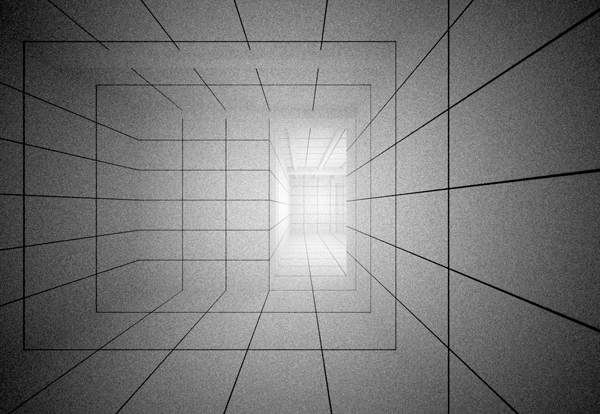
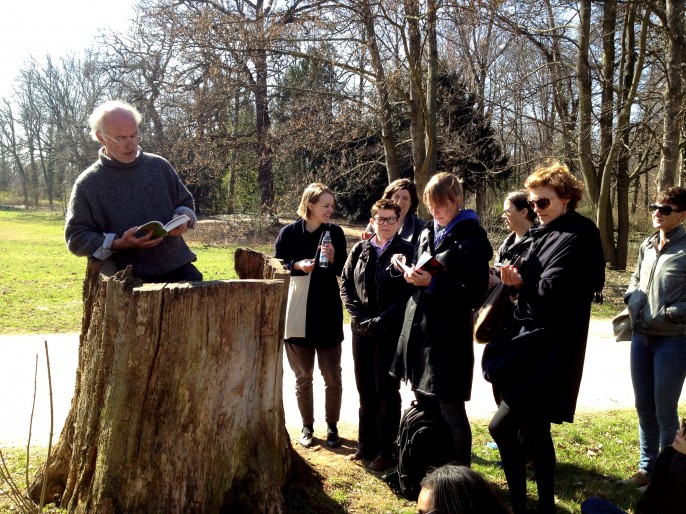

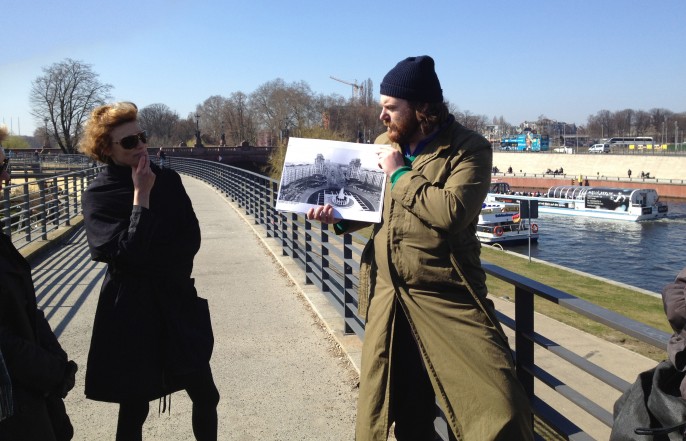
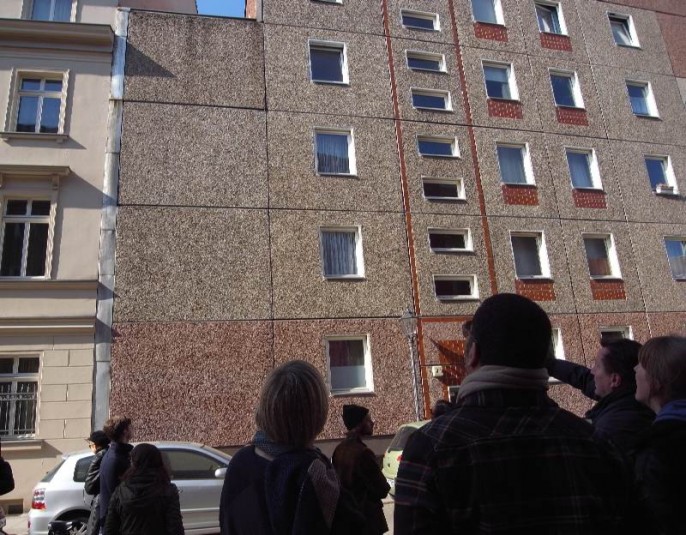
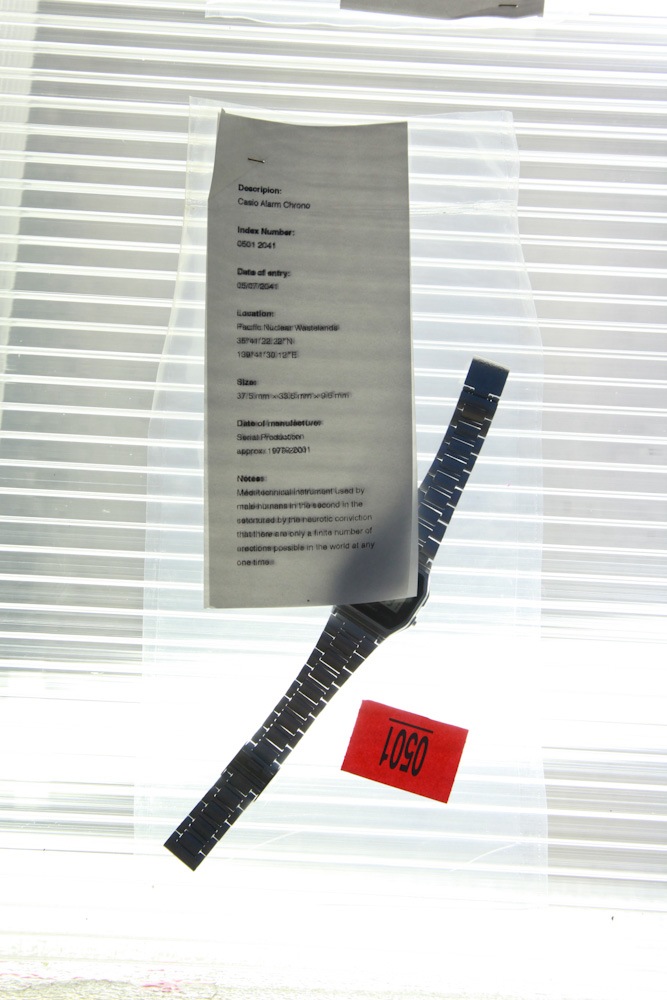
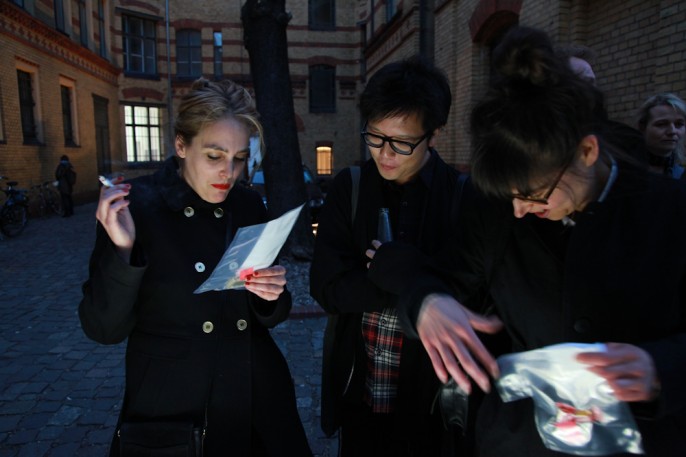
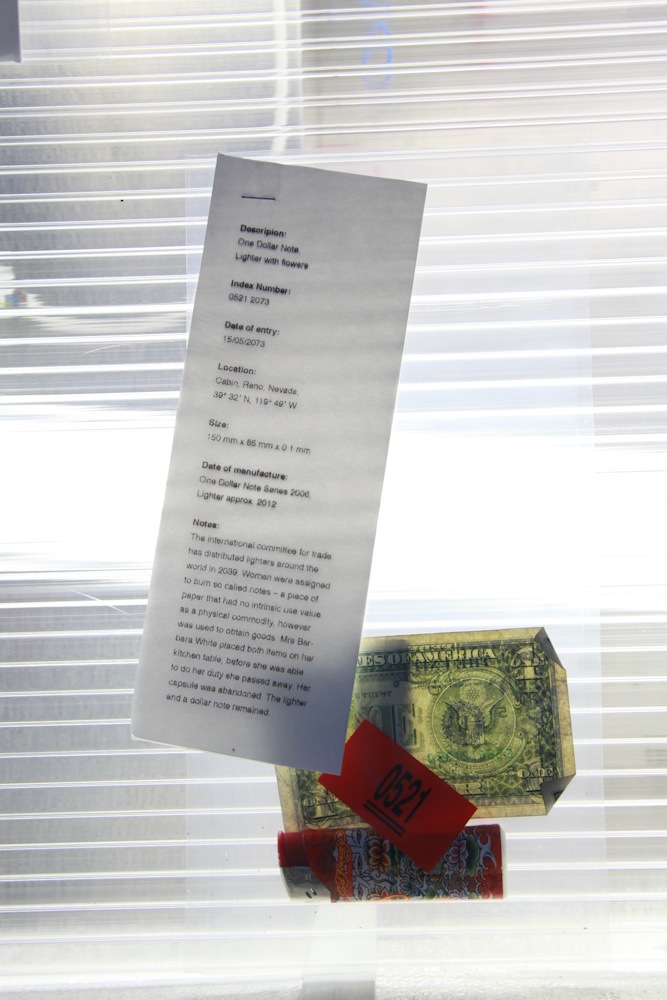
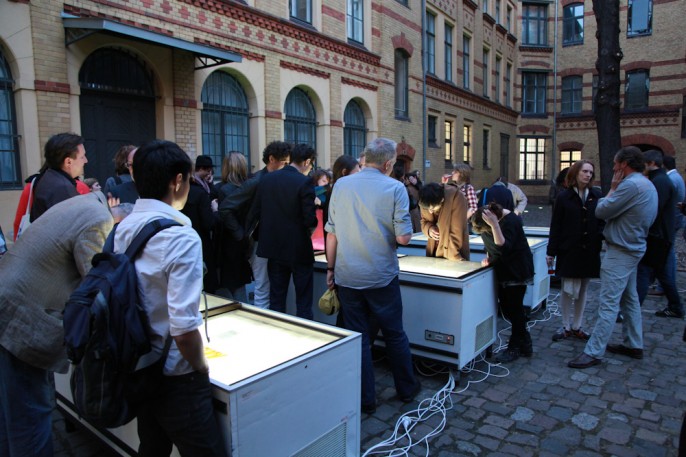
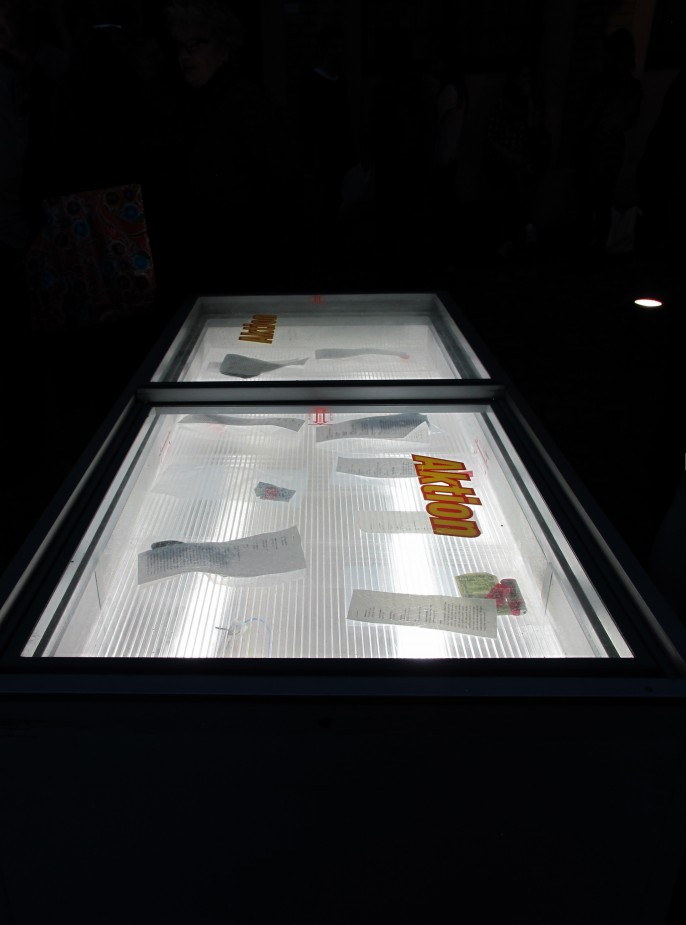
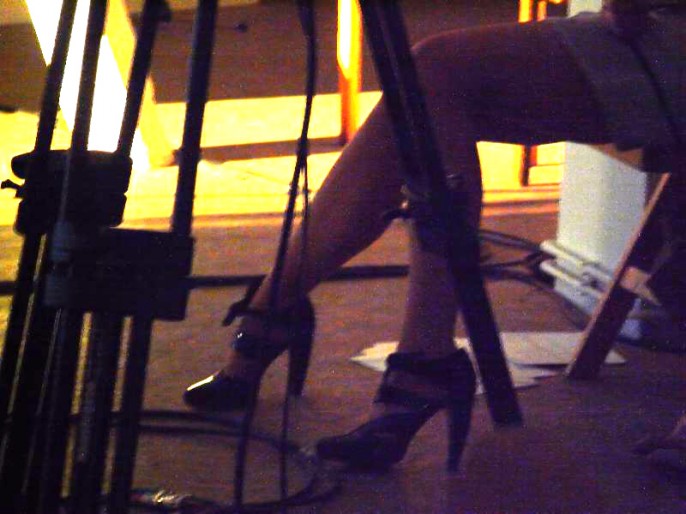
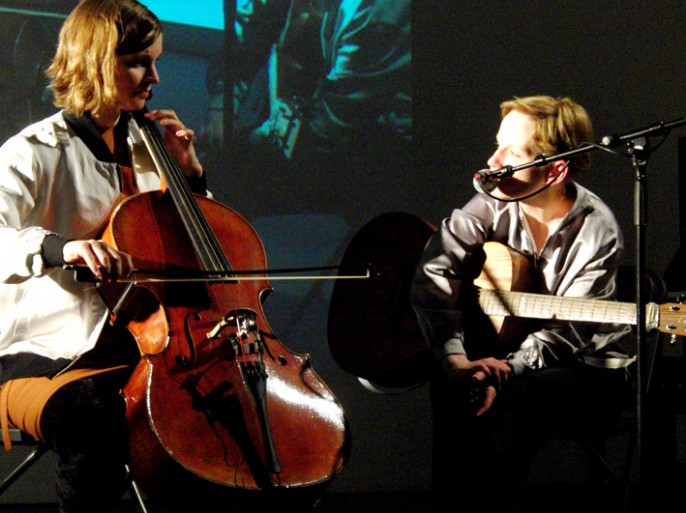
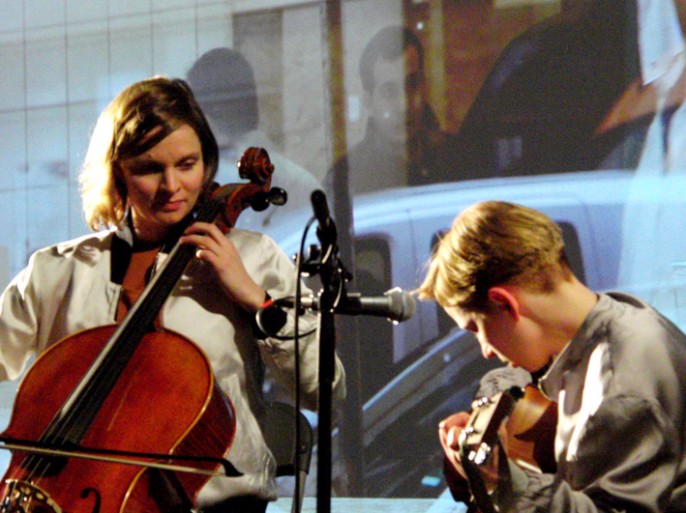

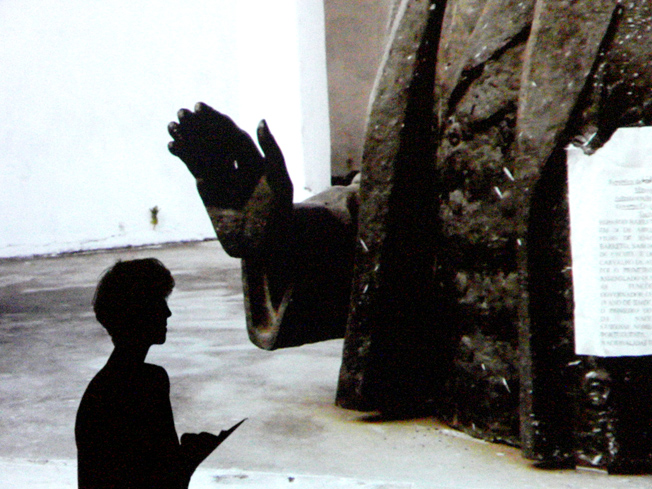
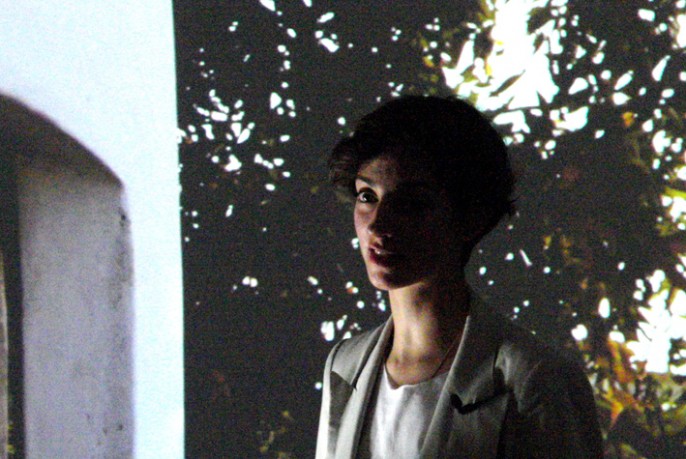 Joana Barrios presenting Filipa César’s piece.
Joana Barrios presenting Filipa César’s piece.
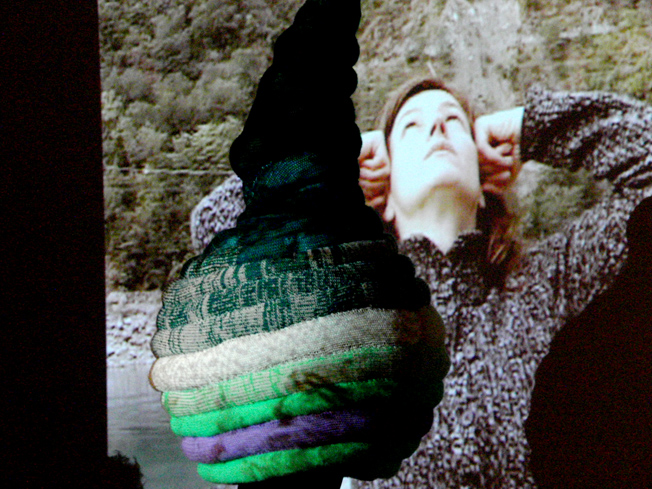
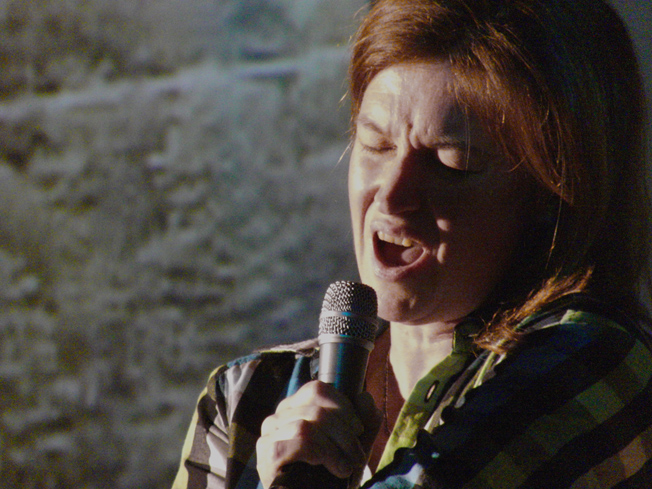
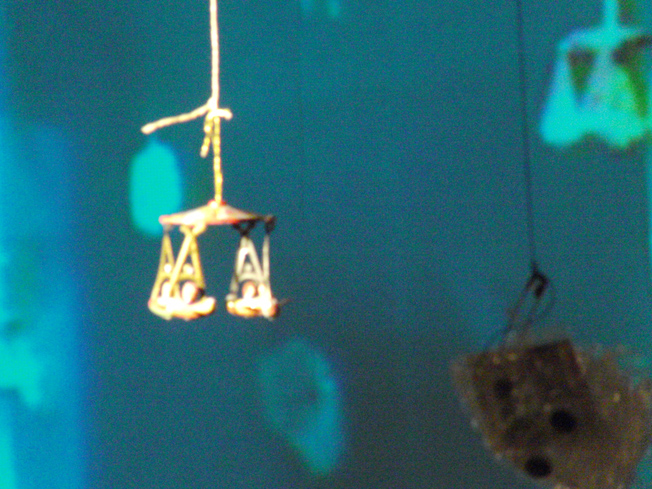

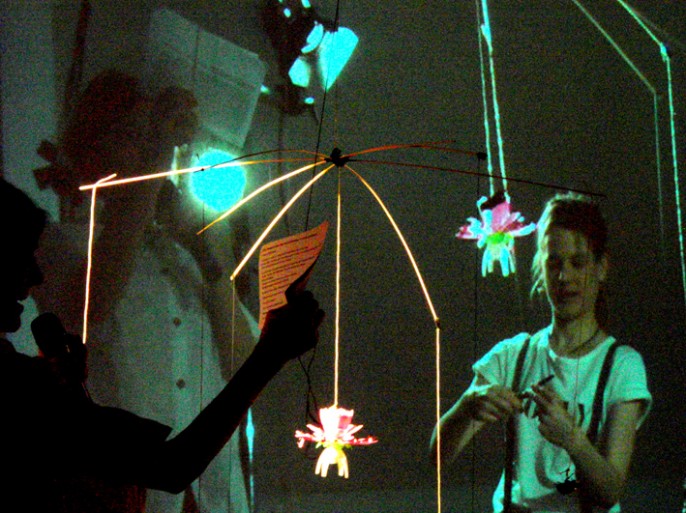
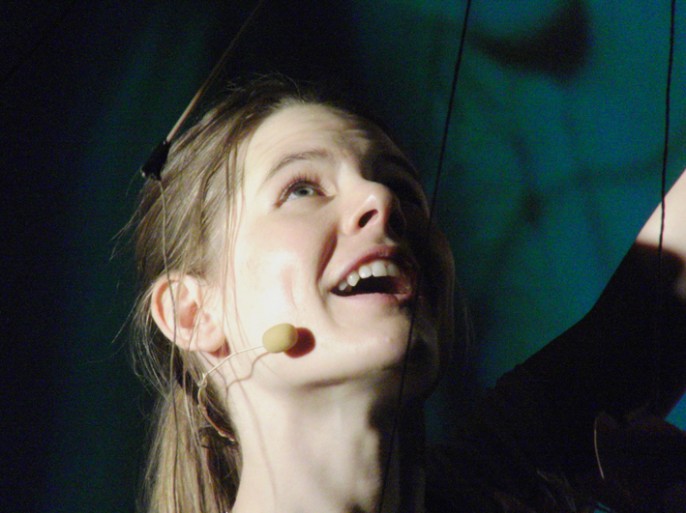
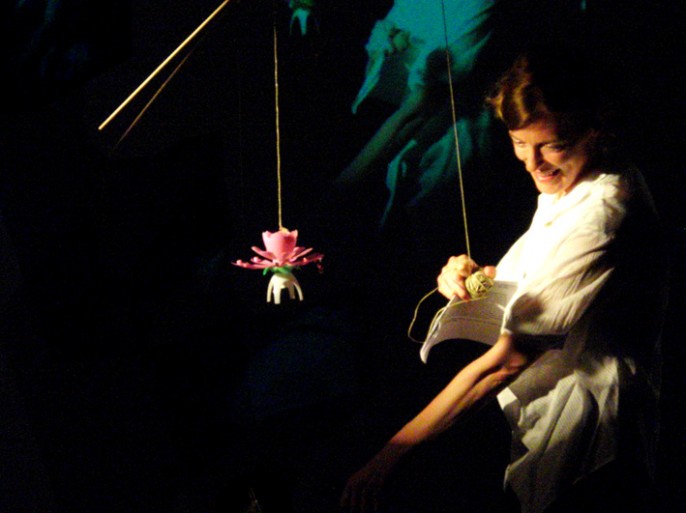 Aino Laberenz & Anna-Catharina Gebbers
Aino Laberenz & Anna-Catharina Gebbers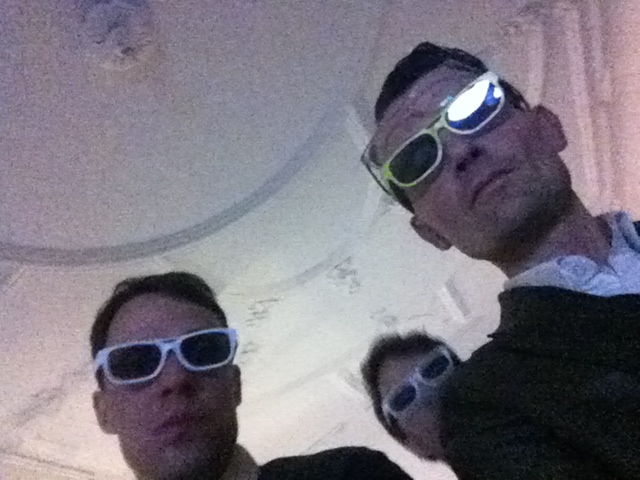



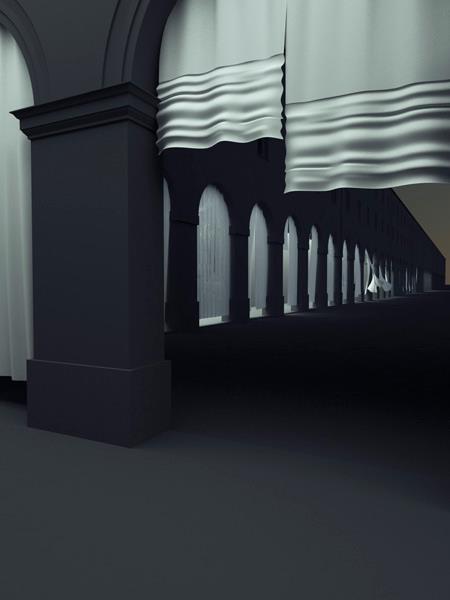



 I was convinced that my earlier hunch was right: buried inside the oval of the stadium was a particle accelerator. Relativity, the old Lea Valley space-time mush, was being scrambled. Outside the circuit of the blue fence, voodoo snakes, big-mouth crocodiles and eviscerated chickens were screaming on walls: Berlin ’36. Mexico City ’68. Munich ’72.
I was convinced that my earlier hunch was right: buried inside the oval of the stadium was a particle accelerator. Relativity, the old Lea Valley space-time mush, was being scrambled. Outside the circuit of the blue fence, voodoo snakes, big-mouth crocodiles and eviscerated chickens were screaming on walls: Berlin ’36. Mexico City ’68. Munich ’72.